The ARM vs x86 Wars Have Begun: In-Depth Power Analysis of Atom, Krait & Cortex A15
by Anand Lal Shimpi on January 4, 2013 7:32 AM EST- Posted in
- Tablets
- Intel
- Samsung
- Arm
- Cortex A15
- Smartphones
- Mobile
- SoCs
Cortex A15: Kraken
While SunSpider wasn't a great performance target for Exynos 5250, Kraken is a different story entirely. The Cortex A15s complete the task significantly quicker than the competition, and as a result achieve competitive energy usage although at significantly higher peak power consumption.
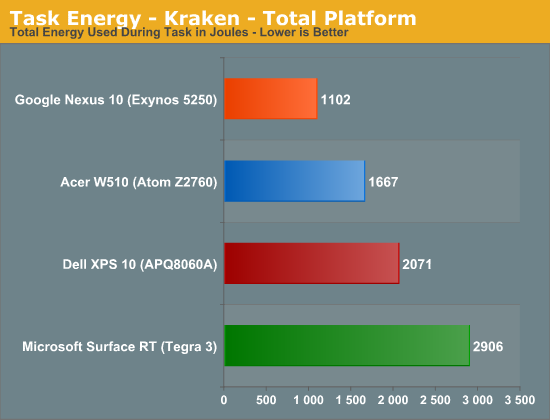
Despite the high peak power consumption of the Nexus 10 and its Cortex A15s, total energy usage is the lowest out of any of the contenders here since the Exynos 5250 is able to complete the benchmark so quickly. Intel is up next, followed by Qualcomm.
Once again we're seeing peak CPU power usage of ~3W, compared to < 1.5W for the competition. The performance advantage is enough to justify the added power, however in devices that simply can't dissipate this much heat (e.g. smartphones) I wonder what will happen.

Isolate the CPU cores themselves and the race is much closer, this time with Qualcomm taking the lead.
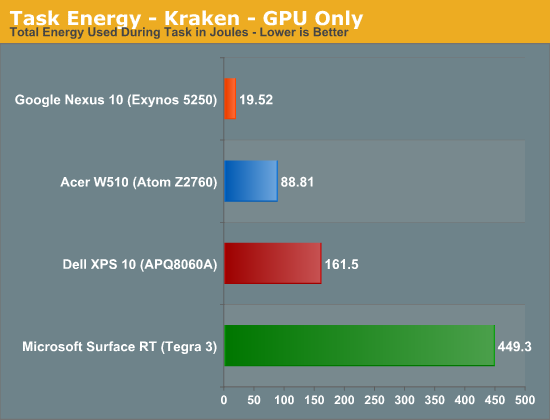
When mostly idle, the Mali-T604 on Samsung's 32nm LP (HK+MG) process barely sips power.
Kraken - Max, Avg, Min Power
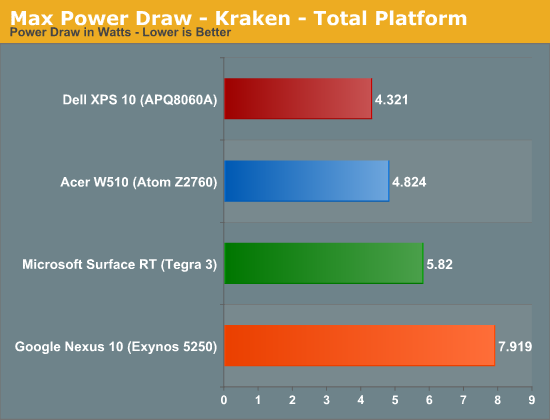
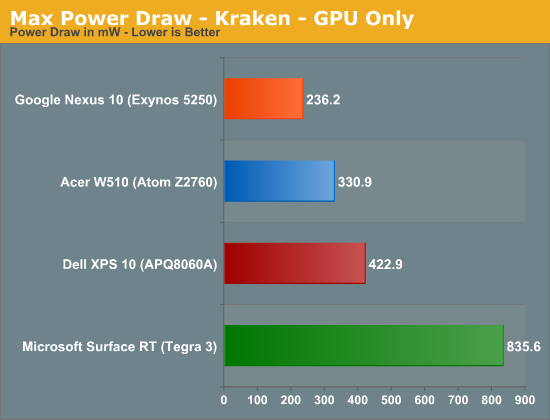
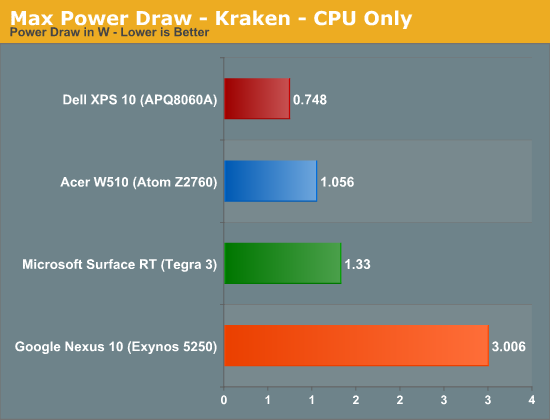
Average Power Draw
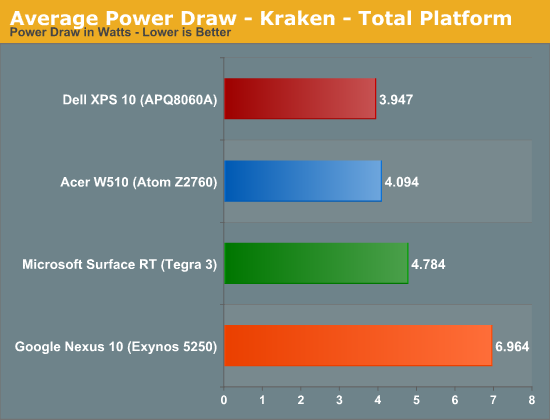
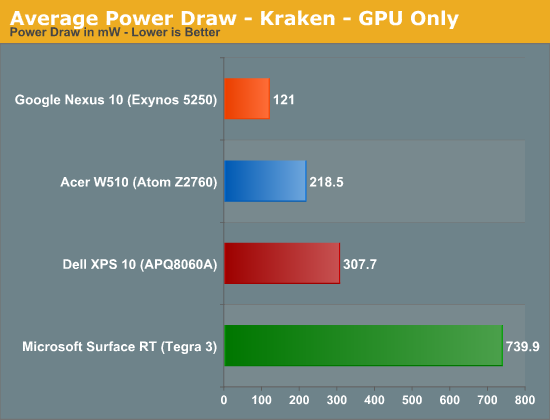

Minimum Power Draw

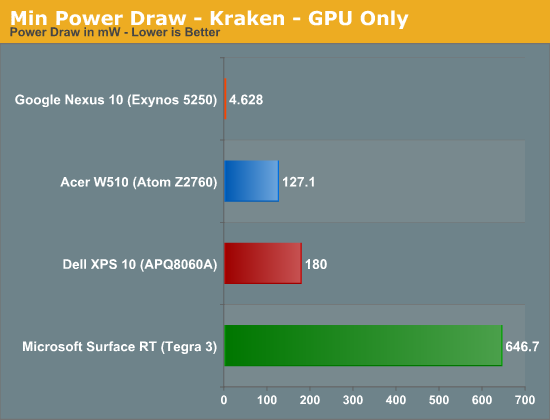
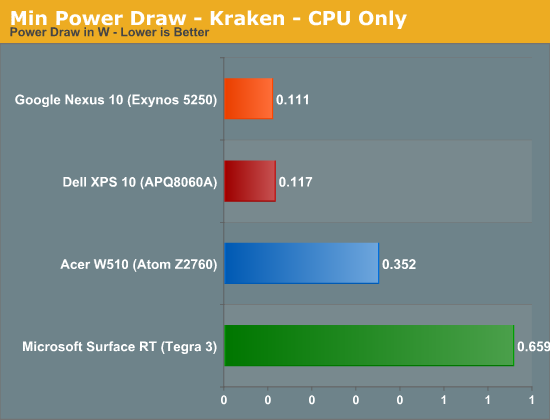


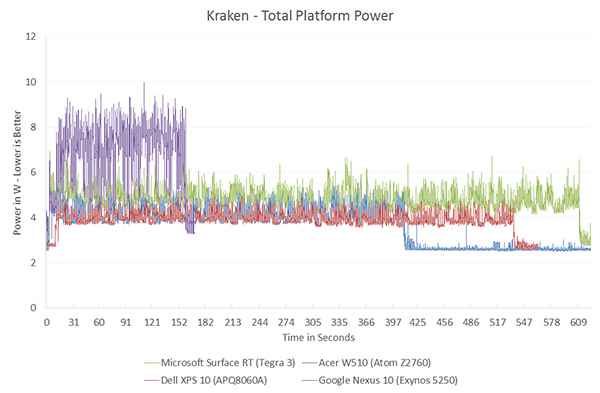
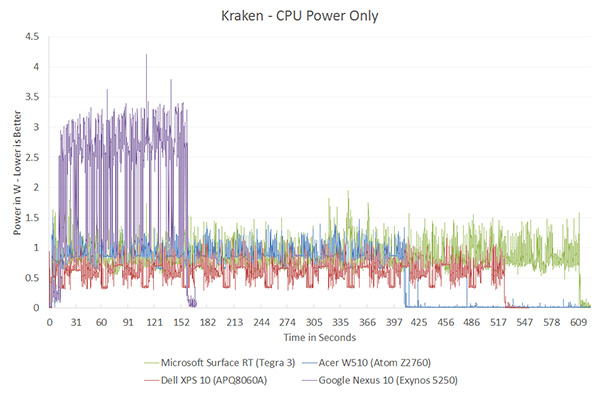
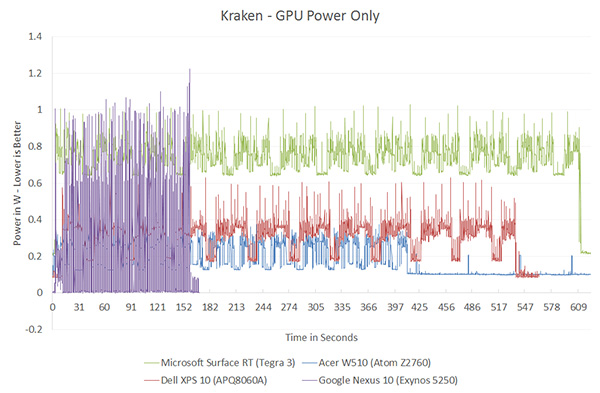








140 Comments
View All Comments
gryer7421 - Friday, January 4, 2013 - link
aaaand then looses where it matters, the rest of the platform. one more process shrink and both will be on even terms in cpu power usage and then as a whole platform will start punching arm in the face.Wolfpup - Friday, January 4, 2013 - link
Huh? Did you read the article? Atom built on 32nm is competitive with ARM built on 28nm. Not only that, but it's looking like Haswell will realistically be able to compete here too, and we've got the second gen Atom coming up this year too...but TODAY'S Atom at an older process is competitive with ARM...what you're claiming is exactly the opposite of what the article says.JumpingJack - Friday, January 4, 2013 - link
I don't think we are looking at the same data, overall Atom appears to uses the same or less power than Krait and offers better performance in general.Homeles - Friday, January 4, 2013 - link
"Anyone with half a brain" would read the article before making such an idiotic statement.Rezurecta - Saturday, January 5, 2013 - link
wow. Way to belittle Anand's hard work...Great article! One of the many reasons I love this site. :)
Death666Angel - Friday, January 4, 2013 - link
The Star Wars theme to play in my head! Thanks for that! :DDeath666Angel - Friday, January 4, 2013 - link
"I wonder what an 8W Haswell would look like in a similar situation."Me too. However, considering that they 17W ULV parts only reach those numbers by throttling as well, I don't expect a lot.
carancho - Friday, January 4, 2013 - link
Amazing work. Congratulations! A couple of presentation suggestions:Next time please smooth some of the most important charts. The volatility makes it hard to see where the averages are. Take this chart: http://images.anandtech.com/reviews/SoC/Intel/CTvK... it could really benefit to have another copy with some additional smoothing.
Also, in power charts like this http://images.anandtech.com/reviews/SoC/Intel/CTvK... it would be helpful to have as a summary followup chart the power calculation done and presented as bar charts; otherwise we have to resort to calculate the differences in the areas below the lines with our eyes, and they can be deceiving.
carancho - Friday, January 4, 2013 - link
I hadn't reached the A15 part yet when writing this. Ignore the 2nd comment.amorlock - Friday, January 4, 2013 - link
I'm frankly amazed and impressed that Intel can get Haswell down to 8W but it's hard to imagine it in a mid range mobile device because of the likely unit cost. The reason Atom has stagnated until recently is because Intel doesn't want to create a chip that cuts into it's very profitable mainstream CPU market.